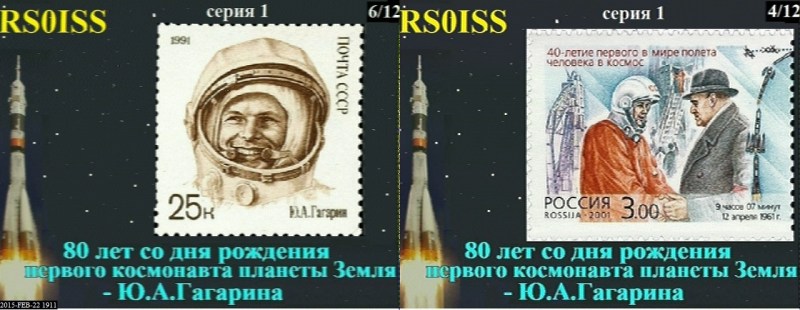According to ARISS (Amateur Radio on the International Space Station), the ISS will be sending us images using slow-scan TV on April 11th in honor of Russian cosmonaut Yuri Gagarin’s birthday. Tune in and you’ll get to see 12 different commemorative images from space, and of course bragging rights that you directly received them with your radio setup.
For those who aren’t Ham radio types, slow-scan TV (SSTV) is a radio mode where the pixels in an image are sent by encoding the brightness and/or color as a tone, a lot like a modem, fax machine, or the data cassette tapes of yore.
The ISS uses PD-180 which is a color mode where each pixel’s red, green, and blue values are encoded in a pitch between 1500 and 2300 Hz. Each image takes just over three minutes to transmit, meaning you’ll have to track the ISS pretty well as it travels across the sky. But don’t fret, they send each message for around an hour, so you have a good chance to receive it. (We’ll be the first to admit that a frame rate of one frame in 187 seconds isn’t really “TV”, but that’s what they call it.)
SSTV’s use in the space program goes back even before the moon landing, but with modern software-defined radio setups, it all becomes a lot more convenient to receive. The ISS folks do this periodically as a service to the amateur radio community, so it’s a good time to try out your chops.
We’ve covered ARISS before, but Yuri’s birthday is always a good reason to celebrate the folks out there. And if you need a reminder of when to look up, this hack right here has you covered.
If you do receive some images, you can upload them to the ARISS Gallery. Or you can just hit refresh to see them as others post them up.
















Figures I work that day, I should really setup a QFH antenna and just auto-record that freq
“isn’t really TV”
It’s image data sent via radio, I don’t know what this other definition of “tele-vision” you’re using is.
Agreed. It may not be video, but it fits the definition of television perfectly.
I plan on having my station set up for this tomorrow, I hope I get some clear pics. The last time they did this I managed to get a few semi-clear pics, but my antennas aren’t optimal for satellite/space operation.
“Joey, stop watching TV and come down to dinner, now!!!”
“But ma, the ISS is sending another single static image encoded in audio tones for the next 45 minutes.”
Too bad, ISS seems to be invisible the whole period from the Netherlands.
Some HAM guys out there might repeat it for you, you should check.
mind you, I understand that’s not the same.
Same here… totally out of phase in NA for the window. I was disappointed… how come Russia gets all the nice stuff?
You have obviously never driven a Lada, sorry about the reception in the land of tulips and pot though.
NA = North America.
An SDR at 145.8MHz(FM) with DM780(a component of HRD) will work for this. Orbitron will help with the Doppler and timing if you use a program that supports DDE, like HD-SDR… A QFHA or crossed dipole, 90 degree phased, antenna would be helpful, but in reality, reception can be achieved with a ground-plane, with mixed results.
Amateur slow scan TV is either a PAL or NTSC frame transmitted very slowly line by line as a varying audio tone. Hams use the TV term since it emulates one of the two television formats. Typically it is used to transmit a single picture. It most closely resembles a fax but in color. The use of an audio tone enables the receiving operator put a PC microphone up to a short wave receiver and with the proper software in the PC capture the picture. You can see the picture forming line by line on the screen starting from the top. You eventually end up with a fairly good quality image that can be saved as a file.
No, it isn’t PAL or NTSC. Though present-day SSTV implementations are digital, in fact, the standards are analog. The audio frequency that represents color is, in theory, infinitely variable, and not digitized, well not until you feed it into your sound port on your computer.
Anybody know if this is the same set they transmitted back in February? Or are there new images in this set?
does anybody have recommendations for an antenna for this band? I am not sure if I have an antenna that likes these frequencies
They’re Xmitting on 145.800MHz, so a standard 2m antenna will be fine. If you’ve got some of 300Ohm twinlead (TV antenna wire) lying around, you can make a pretty serviceable J-Pole for peanuts. Added advantage of being a very portable antenna you can just toss in your luggage. Google will hand you many, many schematics for one.
Even some coat-hanger wire cut to 19″ will pick it up, though a j-pole will be more effective.
This has been happening for a while now, they sent several images over the past few months.
http://www.issfanclub.com/image/tid/54
sounds like the same thing they did on feb 22nd. hopefully no eav this weekend to mess it up.